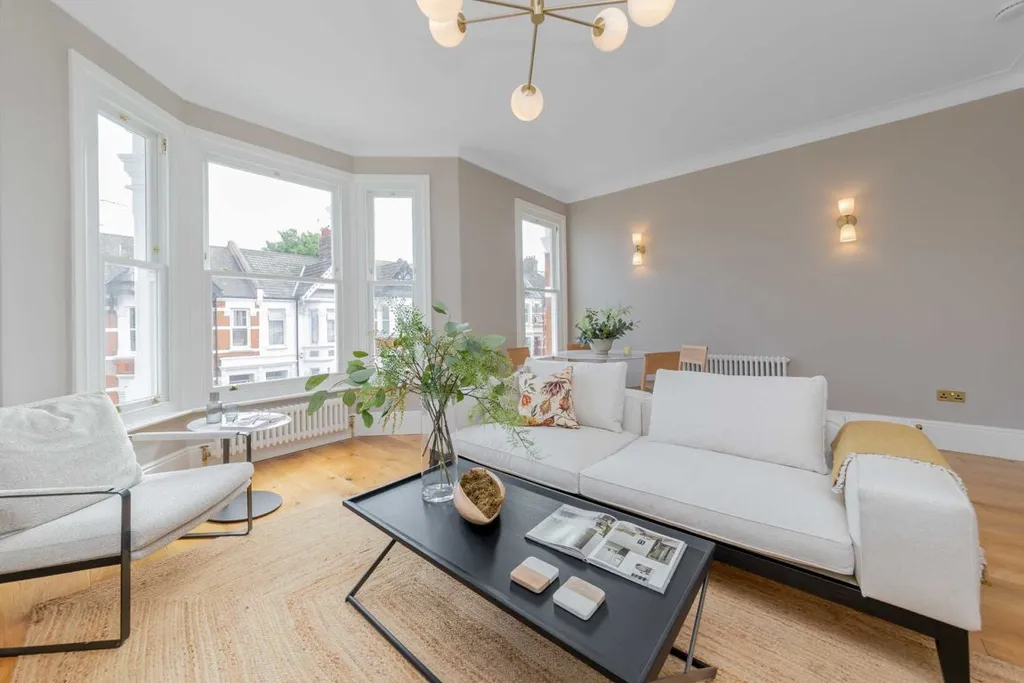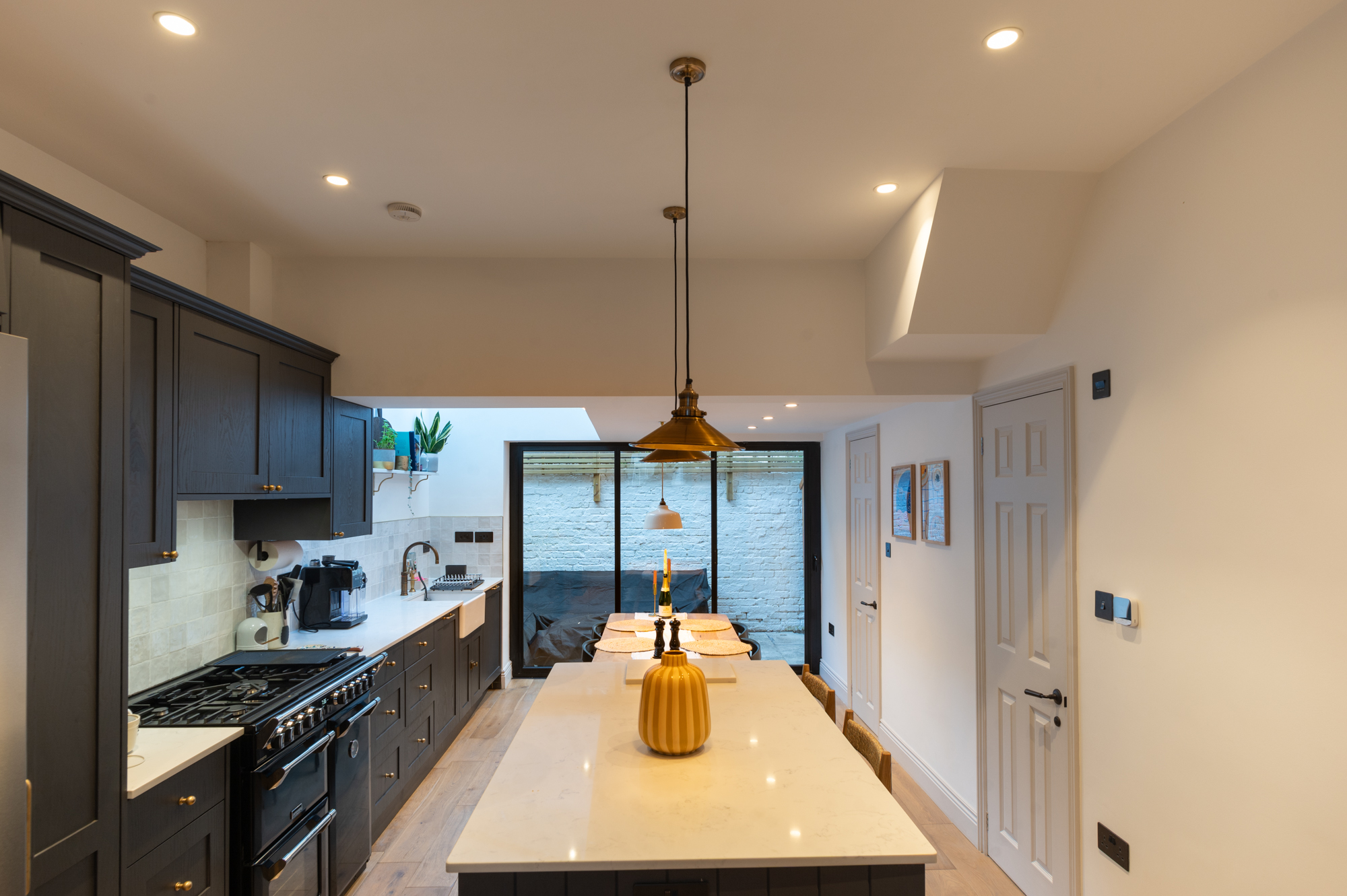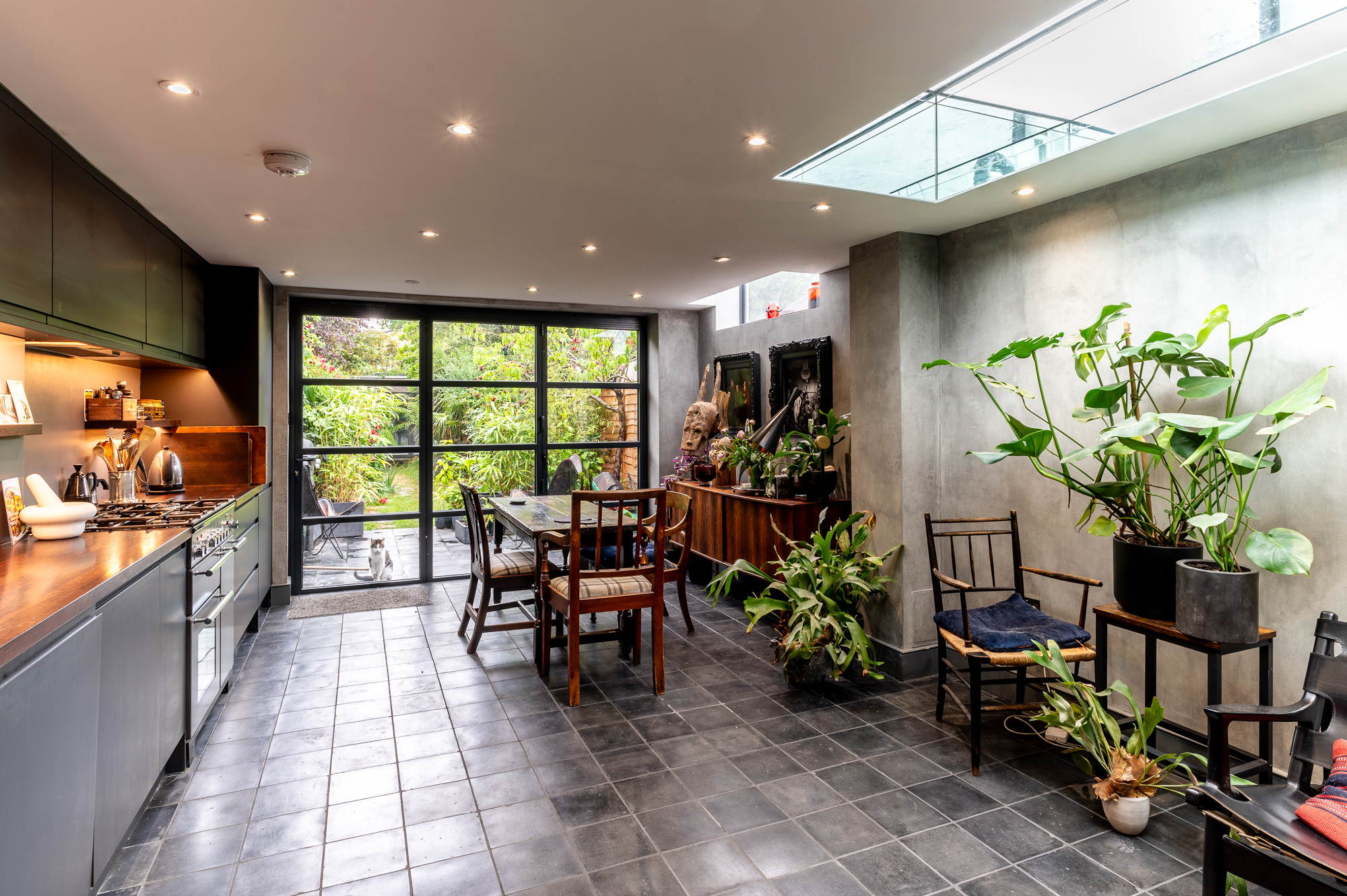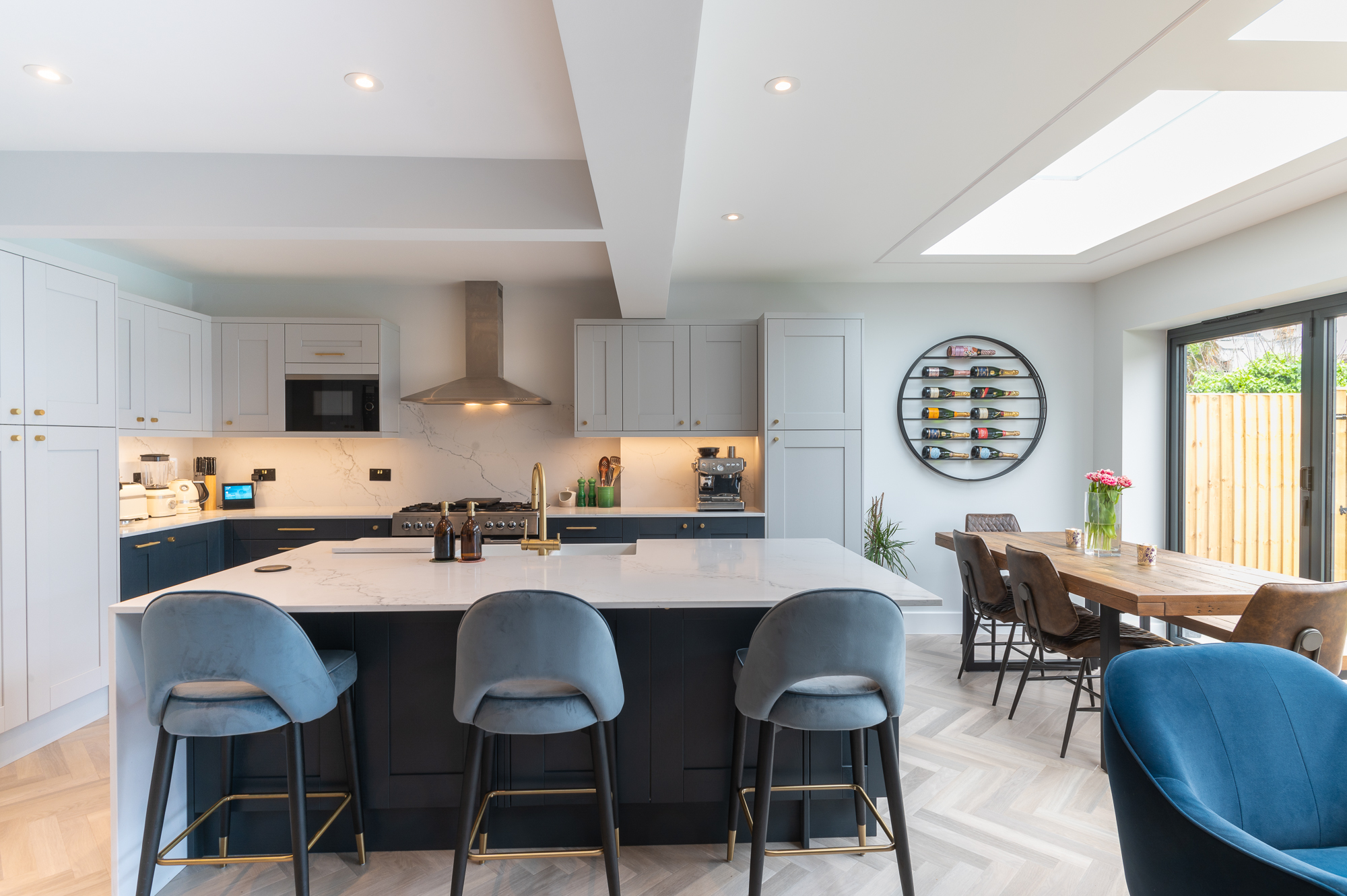Being one of the most popular and recognisable types of property in the UK, terraced houses are ideal for families living in crowded urban areas. Add to that, the charm and character of a Victorian era home, and it becomes obvious why Victorian terraces are so coveted.
But when your small, terraced home no longer meets the needs of, or has the space for, your growing family, a quick solution is a must.
Loft conversions are seen as the most effective way to add space and value to your terraced home. This is because they allow you to convert the existing roof space into valuable living space without sacrificing your garden area.
Best of all? It can be achieved at a fraction of the cost (and inconvenience) of moving houses.
A loft conversion is essentially a simple and cost-effective solution to adding space and value to your home. Loft conversions offer property owners the perfect opportunity to create beautiful, brighter, and larger living spaces, that add value, and are a great alternative to regular extensions.
The structure of Victorian terraced homes makes loft conversions extremely suitable options for home improvement. This is because terraced homes, especially those built before 1960, tend to have steeply pitched roofs and thereby larger loft spaces.
There are several different options for loft conversions available and choosing the right one for you is essential in constructing the perfect loft conversion. Some of the most popular types of loft conversions for terraced homes include:
Velux loft conversion
The simplest type of the conversion, Velux loft conversions are ideal for homes which have a roof height of at least 2.3m. This is because these loft conversions essentially involve the installation of roof windows (or Velux windows) into the pitch of the roof, without altering the structure of the roof.
A staircase, additional insulation, and floor reinforcements then help convert this roof space into a quick, simple, and beautiful loft room. The bright and airy space created make Velux loft conversions perfect for a guest bedroom, playroom, or even a spacious bathroom.
Rear dormer
Constructed on the rear part of the property, this type of loft conversion involves vertically extending the roof to create a box-like structure which provides additional headroom and floor space.
Rear dormers are exceptionally popular in terraced homes as they are relatively simple and cost-effective conversions. They also help create the perfect additional bedroom or extra bathroom.
L-shaped dormer
Suitable for end-terraced properties, this type of loft conversion is essentially a combination of a side and rear dormers to create a much larger space. This new space may be used to design multiple bedrooms, en-suites, or even play rooms and open plan living areas.
The addition of a roof terrace or Juliet balcony helps to further optimise the design and create valuable outdoor space.
Mansard conversion
Though more complex to construct when compared to other loft conversions, mansard lofts are visually appealing structures that involve altering the existing roof to create a flat roof with a sloping wall.
These conversions allow you to use the entire width of the property and may be used to design incredible living spaces within your home.
Most loft conversions in terraced houses fall under permitted developments and therefore, do not require planning permission. However, for a loft conversion to qualify as a permitted development, it must meet certain criteria and specific limitations. These include:
- The property must not be listed or located in a conservation area
- The loft conversion must not exceed the height of the existing roof
- The loft conversion must not include balconies, verandas, or raised platforms
- Side-facing windows must be obscure glazed
- Volume of enlargement must not exceed the original roof space by more than 40 cubic metres for terraced houses
If the loft conversion does not fall under permitted developments then planning permission will be required. The process for securing planning permission involves submitting a comprehensive application including detailed plans of the proposed design, and may take up to 8 weeks for approval.
Due to their shared walls, terraced houses do, however, require party wall agreements. These must be in place before the build can commence to avoid any legal disputes in the future.
Loft conversions are incredibly versatile in their style and design. However, when deciding on a plan for your loft conversion for your mid-terraced or end-terraced property, you must consider the space available, the structure of the existing roof, and the placement of the staircase to gain access to the loft space.
The type and style of the rooms or rooms created may then be used to design:
- Bedrooms
- Bathrooms/ En-suites
- Home offices
- Library/ Study corners
- Playrooms
- Home gyms
- Walk-in wardrobes
With feature walls, bespoke interiors, and fabulous views, it is also easy to make the newly-created space into one that perfectly complements your individual style.
The loft space can be further optimised by:
- The installation of strategically-placed windows to maximise the natural light that enters
- Converting awkward corners into useful storage spaces with the addition of shelves
- Arranging furniture to match the head room requirement for each area
Loft conversions are generally considered to be a cost-effective alternative to regular extensions. On average, they can range from a conservative £20,000 to a more extravagant £80,000. However, the cost is dependent on a number of factors such as:
- The complexity of the conversion
- The size of the conversion
- Building materials
- Location
- The need for planning permission
- Specialists’ fees
- Fittings and fixtures
The style of the room you hope to design also affects the cost of the project. For example, creating a bathroom with all the plumbing requirements and fittings would be more expensive than designing a modest home office.
It is important to realise that the cost of a loft conversion may be made up by the value it adds to a property. Loft conversions usually increase the value of a property by 10-20%, so if the cost of the conversion is less than that amount, it is a worthwhile investment.
A loft conversion is often viewed as the best way to increase the square footage of your terraced home. Utilising the awkward loft spaces and transforming it into beautiful bedrooms, spacious bathrooms, or cosy study nooks, not only adds some much-needed space for your family, but also substantially increases the value of your property.
However, in order to get the most out of your loft conversion, it is imperative that you consult the experts. Why? Because they bring with them all the experience and expertise that can help you convert your loft in the best way possible.
From planning and designing the loft conversion in minute detail and applying for the requisite approvals, to selecting the best materials and supervising the entire project. The experts do it all.
Simply put, the professionals help you optimise the loft conversion in innovative ways and perhaps more importantly, they help you avoid the myriad of mistakes and errors that may prove to be costly later on.
Loft conversions on two-bed Victorian terrace homes can add incredible space and value to your home provided it is done right. To ensure that the final build boasts of elegant design and a seamless finish, it is important to entrust this project to experienced and reputable builders.
This is where Good Design and Build comes in.
Being the primary extension and conversion specialists, with a penchant for period homes, the team at Good Design and Build have decades of experience and unmatched expertise in constructing exceptional loft conversions.
Our team comprises of architects, surveyors, builders, technicians, and project managers. This allows us to offer complete project management services from start to finish.
Our services include:
- Surveying the location
- Free consultations and cost quotations
- Comprehensive designing and planning of the proposed conversion
- Applying for and securing the requisite planning permission and building regulations approval
- Contractual work
- Daily on-site management of the build
This means that every aspect of the loft conversion is carefully overseen by us; allowing you to get the loft conversion of your dreams without the stress of the build.
How we deliver projects
Our process is simple and divided into two distinct phases with separate contracts: Design and Build. As a client you only commit to one phase at a time depending on what stage of the process you are in. Each phase consists of three stages as described below.
1. Design
This is the kick-off point for your project. We carry out a complete architectural measured survey of the property. This allows us to create accurate CAD design drawings. This is followed by a design meeting to start discussing your ideas in more detail.
2. Planning
At this stage we finalise the designs with you and start preparing planning applications as needed. We place a high priority on ensuring that plans, designs and schedules are all based on a thorough and detailed understanding of planning guidelines. We co-ordinate with local authorities until the decision is made, and the planning approval is secured.
3. Technical
Once the planning consent is secured, we translate the design drawings into more detailed technical drawings for the purposes of building control and construction. This also includes specifications and structural calculations. At this stage, we will also submit to you our ‘no obligation’ quote for the build phase.
4. Pre-build
90% of our clients decide to stick with us after the design phase is completed. Once the build contract is signed, we kick off the process by making sure all the pre-build processes are complete. These include assistance with party wall agreements, Thames Water build over agreement, submitting building control application, and preparing method statements etc as needed. This stage ends with a pre-start meeting with your foreman before the actual build begins.
5. Build
One of our foremen will be dedicated to your project and will be on-site to manage everyday works. Our project managers will be overseeing the works to make sure they are completed to high standards, within your budget and on time. Throughout the process we will keep you updated with the progress and coordinate the works with third parties such as kitchen or flooring suppliers. We will also advise and guide you to choose any suppliers if needed.
6. Handover
As the build draws to finish, we will help to iron out any ‘snags’ to make sure everything is completed to your satisfaction. We will put together all necessary certificates such as gas, electricity and building control completion along with warranties for glazing, boiler etc. At the final completion meeting, we will hand you these documents, together with the keys to your house. Needless to say, you can contact us any time after this, if you want us to look at something.
This is the kick-off point for your project. We carry out a complete architectural measured survey of the property. This allows us to create accurate CAD design drawings. This is followed by a design meeting to start discussing your ideas in more detail.
At this stage we finalise the designs with you and start preparing planning applications as needed. We place a high priority on ensuring that plans, designs and schedules are all based on a thorough and detailed understanding of planning guidelines. We co-ordinate with local authorities until the decision is made, and the planning approval is secured.
Once the planning consent is secured, we translate the design drawings into more detailed technical drawings for the purposes of building control and construction. This also includes specifications and structural calculations. At this stage, we will also submit to you our ‘no obligation’ quote for the build phase.
90% of our clients decide to stick with us after the design phase is completed. Once the build contract is signed, we kick off the process by making sure all the pre-build processes are complete. These include assistance with party wall agreements, Thames Water build over agreement, submitting building control application, and preparing method statements etc as needed. This stage ends with a pre-start meeting with your foreman before the actual build begins.
One of our foremen will be dedicated to your project and will be on-site to manage everyday works. Our project managers will be overseeing the works to make sure they are completed to high standards, within your budget and on time. Throughout the process we will keep you updated with the progress and coordinate the works with third parties such as kitchen or flooring suppliers. We will also advise and guide you to choose any suppliers if needed.
As the build draws to finish, we will help to iron out any ‘snags’ to make sure everything is completed to your satisfaction. We will put together all necessary certificates such as gas, electricity and building control completion along with warranties for glazing, boiler etc. At the final completion meeting, we will hand you these documents, together with the keys to your house. Needless to say, you can contact us any time after this, if you want us to look at something.
What Our Clients Say
Featured Projects

Harlesden
Sellons Ave NW10 4HJ
The project included creating a master bedroom in the loft with an adjoining terrace.
Learn more

Fulham
Orbain Road SW6 7JZ
This project was completed in 2023 and the approximate budget was £101,000.
Learn more

Lambeth
Hetherington Road SW4
We completed this stunning project for our client Angus in Lambeth.
Learn more

Teddington
Station Road SW4 7PA
We completed this exciting project for our clients on Station Road, a quaint residential area in the heart of Teddington.
Learn more

Leyton
Windsor Road E10
We completed this kitchen extension on Windsor Road, a charming residential street nestled in the heart of Leyton.
Learn more

Harlesden
Sellons Ave NW10 4HJ
The project included creating a master bedroom in the loft with an adjoining terrace.
Learn more

Fulham
Orbain Road SW6 7JZ
This project was completed in 2023 and the approximate budget was £101,000.
Learn more

Lambeth
Hetherington Road SW4
We completed this stunning project for our client Angus in Lambeth.
Learn more

Teddington
Station Road SW4 7PA
We completed this exciting project for our clients on Station Road, a quaint residential area in the heart of Teddington.
Learn more

Leyton
Windsor Road E10
We completed this kitchen extension on Windsor Road, a charming residential street nestled in the heart of Leyton.
Learn more








